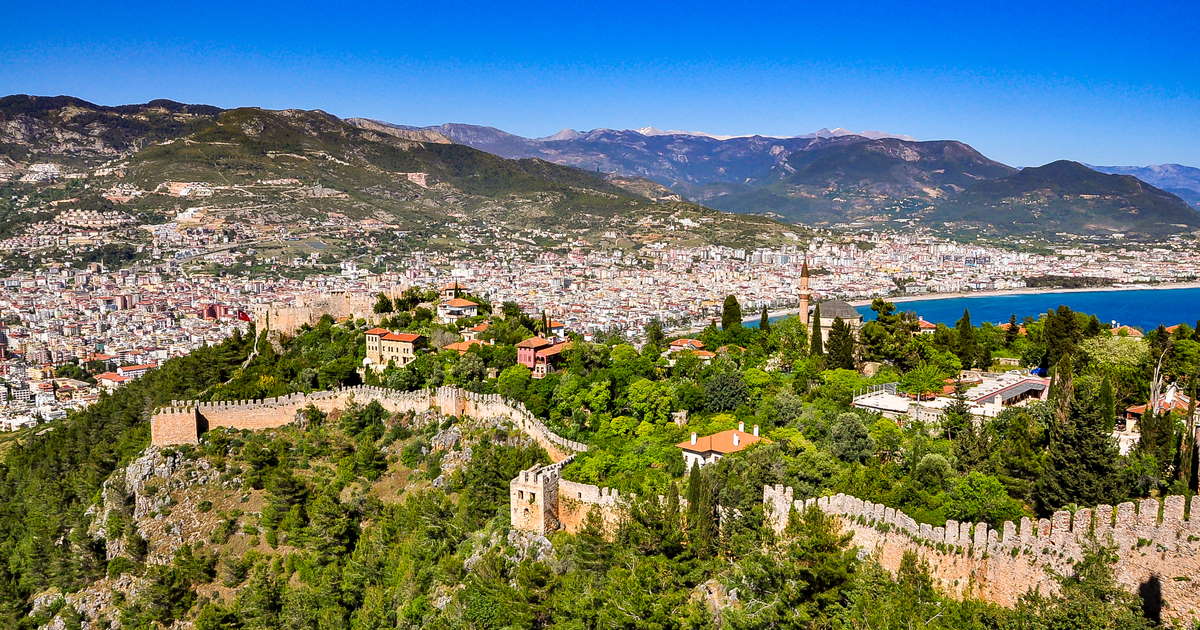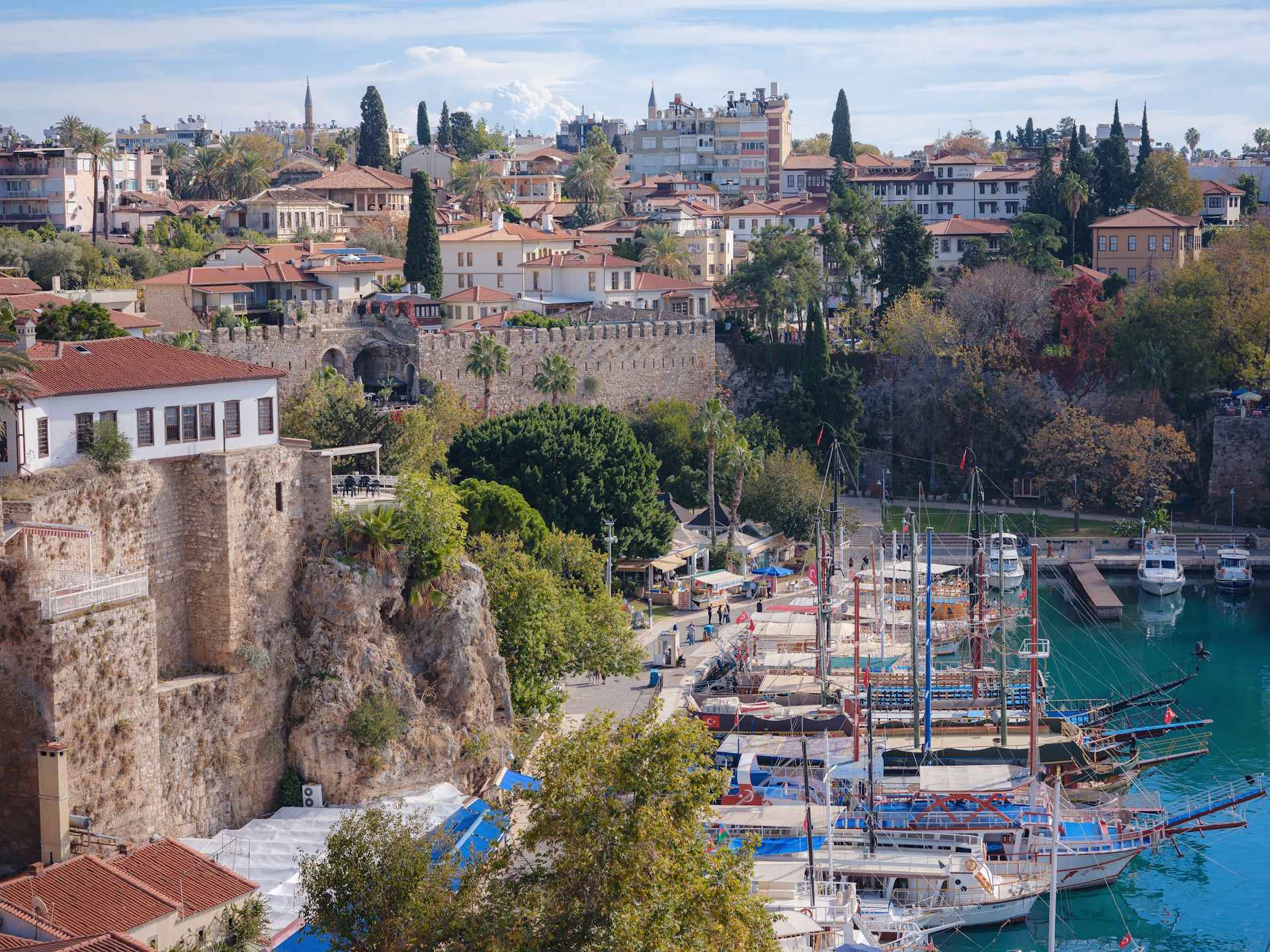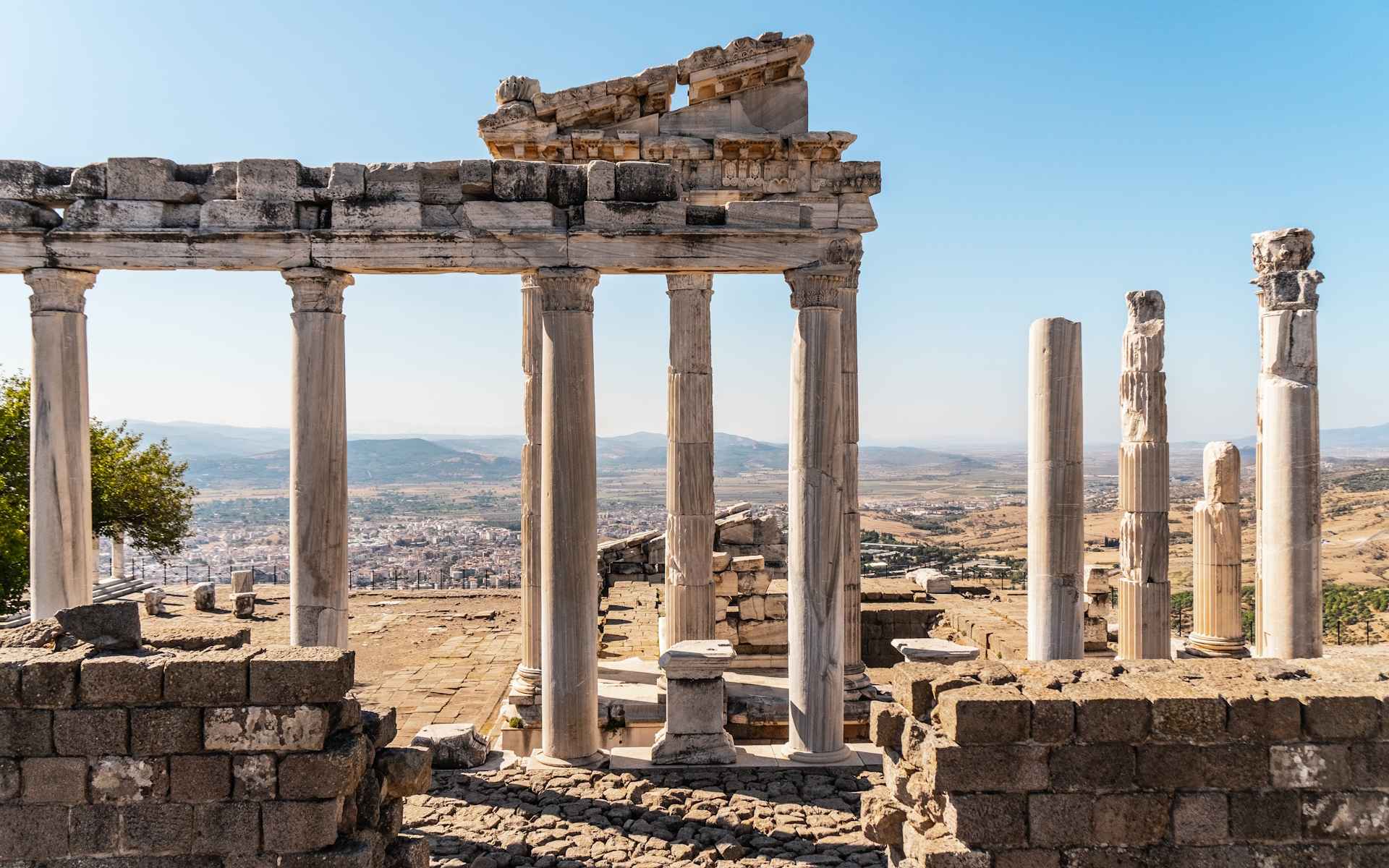Hierapolis Ancient City
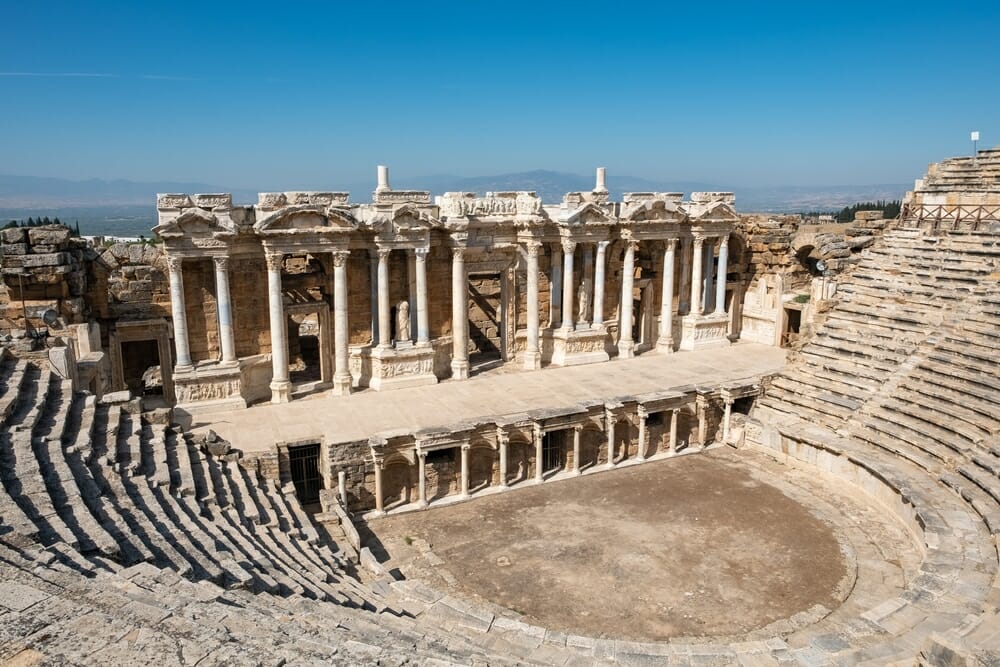
Hierapolis Ancient City, situated in the Denizli province of southwestern Turkey, is a fascinating and historically rich site, renowned for its combination of ancient ruins and its close association with the nearby Pamukkale travertines. The city was founded in the 2nd century BC by the Attalid dynasty, the rulers of Pergamon, and later became a prominent city during the Roman and Byzantine eras. Over the centuries, Hierapolis developed a reputation as a cultural, religious, and healing center, largely due to the thermal waters that flowed from Pamukkale. These hot springs, enriched with minerals, were believed to possess therapeutic properties, and visitors from across the ancient world traveled to Hierapolis Ancient City seeking relief and rejuvenation.
Hierapolis Ancient City thrived under Roman rule, becoming a hub for arts, religion, and medicine. The city’s location, perched above the mesmerizing white terraces of Pamukkale, created an ideal setting for people to immerse themselves in both culture and nature. Today, it remains a captivating destination for history enthusiasts, travelers, and scholars alike, offering a glimpse into life in the ancient world while providing a scenic backdrop of unparalleled natural beauty.
The Necropolis of Hierapolis
One of the most impressive and expansive features of Hierapolis Ancient City is its necropolis, the ancient city of the dead. Stretching for over two kilometers along the road leading into the city, this necropolis contains more than 1,200 tombs, sarcophagi, and funerary monuments, representing a broad spectrum of burial practices from the Hellenistic, Roman, and early Christian periods. The sheer scale of the necropolis, combined with the variety of tomb types—including simple graves, monumental tombs, and richly adorned sarcophagi—offers invaluable insights into the cultural and religious beliefs surrounding death and the afterlife in ancient Anatolia.
The necropolis of Hierapolis Ancient City is divided into different sections, each revealing the societal status of the individuals buried there. Some of the larger and more elaborate tombs, belonging to wealthy citizens and prominent figures, display intricate carvings, inscriptions, and decorative motifs that were meant to honor the dead and ensure their passage to the afterlife. These designs often include mythological figures, religious symbols, and depictions of daily life, providing historians with important clues about the beliefs and customs of the city’s inhabitants. In contrast, simpler graves and communal burial sites reflect the more modest lifestyles of ordinary citizens.
The Theater of Hierapolis
The Roman theater of Hierapolis Ancient City is one of the most awe-inspiring and well-preserved structures in the ancient city. Built during the reign of Emperor Hadrian in the 2nd century AD, the theater could accommodate an estimated 12,000 spectators, making it a significant venue for public performances, theatrical productions, and even political events. The architecture of the theater is a testament to Roman engineering prowess, with a semi-circular seating arrangement (the cavea) that provided excellent acoustics and visibility for all attendees.
The stage area, or scaenae frons, is particularly notable for its intricate decorations, which include Corinthian columns, statues of gods and emperors, and elaborate friezes depicting mythological scenes. These artistic elements, along with the theater’s grandeur, showcase the importance of public entertainment and cultural life in ancient Hierapolis Ancient City. Performances held here likely ranged from classical Greek tragedies to Roman comedies and musical events, creating a vibrant cultural atmosphere for the citizens. Visitors today can still sit in the theater’s seats, imagining the spectacle of ancient performances while enjoying breathtaking views of the surrounding landscape.
The Temple of Apollo
At the heart of Hierapolis Ancient City stood the Temple of Apollo, one of the most significant religious structures in the city. Dedicated to the god Apollo, who was revered as a deity of healing, prophecy, and the arts, this temple was a focal point for religious activities in the city. Apollo’s association with healing made Hierapolis Ancient City a natural center for worship, given its connection to the therapeutic hot springs of Pamukkale. Pilgrims and locals alike would have visited the temple to seek cures for ailments, guidance from the gods, or simply to pay homage.
The ruins of the Temple of Apollo reveal its grand scale and architectural sophistication. Although much of the temple has been destroyed over the centuries, portions of its foundation and columns still stand, allowing visitors to imagine its former magnificence. Interestingly, the site of the temple was later repurposed in the Byzantine era, when a Christian basilica was constructed over its remains. This transformation from a pagan temple to a Christian church illustrates the religious and cultural shifts that occurred in Hierapolis Ancient City as it evolved from a Greco-Roman city to a Christian center during the Byzantine period.
The Healing Waters of Pamukkale
Pamukkale, meaning “Cotton Castle” in Turkish, is one of the most visually stunning natural formations in the world, and its proximity to Hierapolis greatly contributed to the city’s fame and prosperity. The travertine terraces, formed by the accumulation of calcium carbonate deposits from the thermal waters, create a cascading series of white pools that resemble a surreal, otherworldly landscape. These thermal springs, which have been used for centuries for their medicinal properties, were the primary reason for Hierapolis Ancient City’ establishment and success as a healing destination.
The ancient inhabitants of Hierapolis believed that the mineral-rich waters could cure various ailments, ranging from rheumatism to skin diseases, and they built elaborate bathhouses and therapeutic centers around the springs. Even today, visitors come to Pamukkale and Hierapolis to bathe in these warm, mineral-laden waters, continuing a tradition that dates back thousands of years. The stark contrast between the gleaming white terraces of Pamukkale and the ancient ruins of Hierapolis provides a stunning backdrop for exploration and relaxation.
UNESCO World Heritage Status
In recognition of its historical, cultural, and natural significance, Hierapolis, along with Pamukkale, was designated as a UNESCO World Heritage Site in 1988. This prestigious status has helped ensure the preservation and protection of both the ancient city and the natural wonders of the region. UNESCO recognizes Hierapolis not only for its remarkable ruins, which offer invaluable insights into ancient Roman, Byzantine, and Christian civilizations, but also for the geological beauty of Pamukkale, which is considered one of the world’s most extraordinary natural phenomena.
Thanks to ongoing conservation efforts, visitors to Hierapolis can explore the city’s numerous historical sites, walk along the ancient streets, and admire the grandeur of its architectural achievements. The combination of cultural history and natural beauty makes Hierapolis a truly unique destination, where one can experience the profound legacy of the past while marveling at the wonders of the natural world.
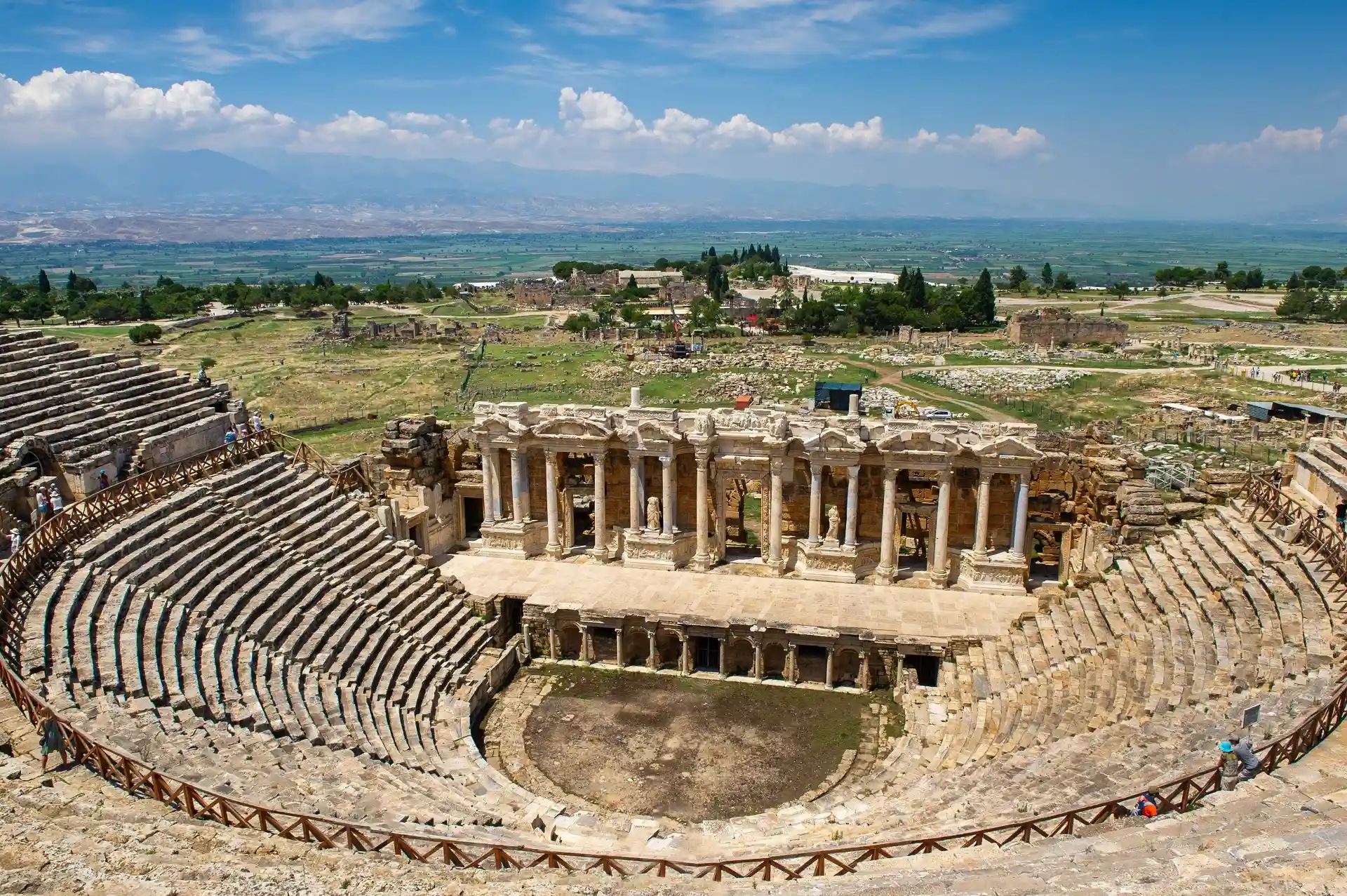
WHAT WE DO
Experience the
Elegance of Turkey
Explore Turkey’s Finest Investment Opportunities with Glowing Elegance.
At Glowing Elegance, we offer exclusive investment tours that immerse you in the charm and potential of Turkey. Our mission is to provide an exceptional experience by showcasing the country’s rich cultural heritage and promising investment opportunities.
